
4 Types of Fencing for Cattle: A Rancher’s Comparison
A Head-to-Head Look at Popular Cattle Fence Materials
A good fence protects your herd, your pasture, and your bottom line. Yet the many options can feel overwhelming. Start by reviewing our barbed wire strand guide and the four most common systems below, then match each choice to your budget, terrain, and management style in Florida, Alabama, or Georgia.
Barbed Wire – The Traditional Budget Choice
Classic barbed wire remains popular because installation costs run as low as $1.25 per foot. Three or four strands create a clear psychological barrier that keeps most cattle in place. Downsides include frequent tightening and a heightened risk of hide damage or veterinary bills if animals push through.
Woven Wire (Field Fence) – Security for Mixed Herds
Field fence secure field fence tips combines vertical and horizontal wires to produce a tight mesh. Calves cannot slip through, and adults are less likely to injure themselves. When built with Class 3 galvanized steel, a woven design lasts for decades, making it a dependable “set-and-forget” perimeter for ranches from Marianna, FL, to Dothan, AL.
High-Tensile Smooth Wire – Modern Strength and Longevity
High-carbon smooth wire can be tensioned tighter than traditional low-carbon strands, so it needs fewer posts and resists animal pressure modern braided fence insights. Research from Bekaert Fencing, 2025 shows properly installed high-tensile systems deliver more than twenty years of service with minimal maintenance, even in the humid Southeast.
Electric Fence – Flexible Grazing Control
An energized fence excels at rotational grazing. Solar or AC chargers send a brief, powerful pulse that teaches cattle to respect the line. Because a single or double hot strand is quick to relocate, producers near Tifton, GA, use it to improve forage utilization without the cost of permanent divisions.
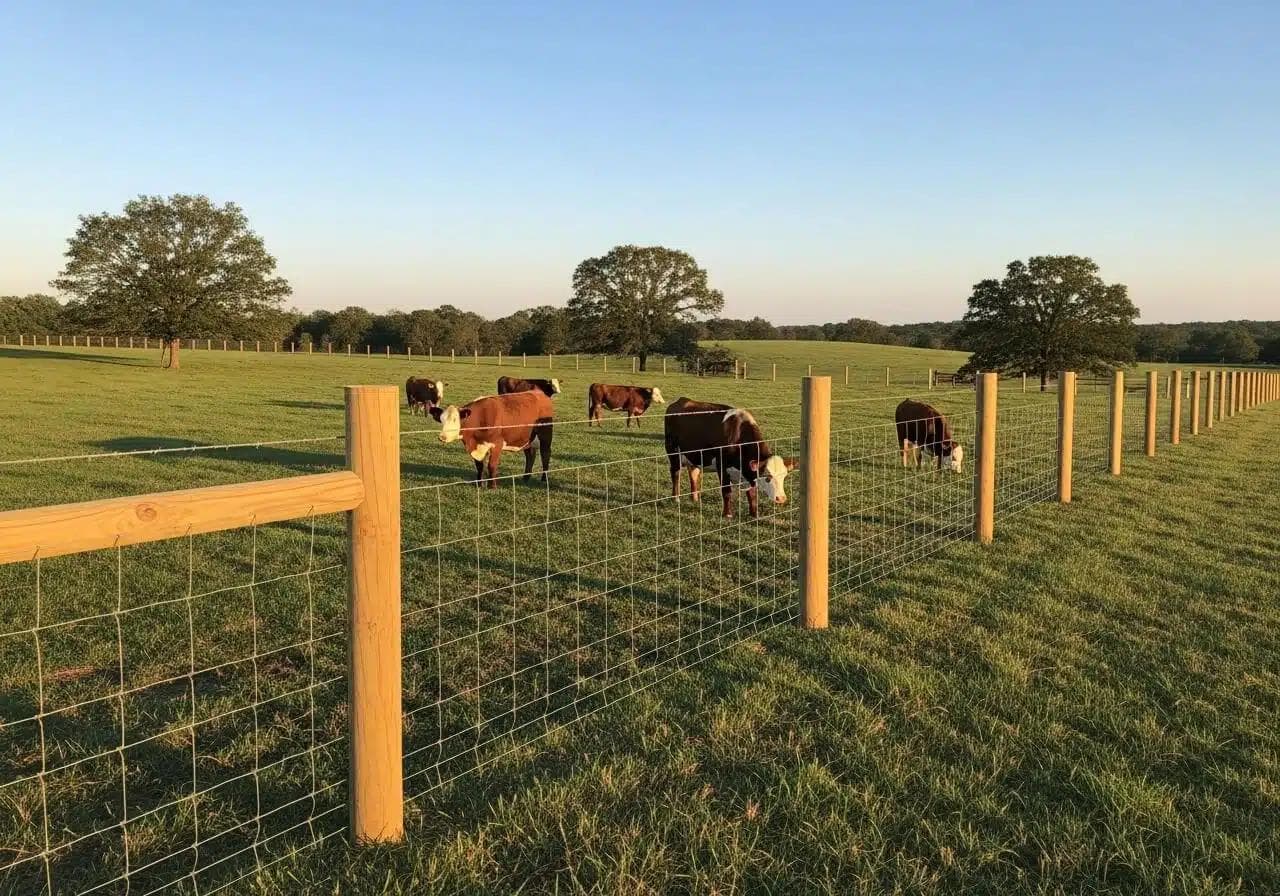
Key Factors for Southeastern Ranchers
Cost Versus Longevity
A bargain fence that fails in five years costs more than a premium one that lasts twenty affordable fence materials.
Local Regulations
Florida’s “lawful fence” statute sets a three-foot minimum height for cattle, yet many ranchers choose 48-52 inches for better containment. Liability laws in Alabama hold owners responsible when livestock escape, while zoning in South Georgia can dictate material and placement. Check county codes or consult UF/IFAS EDIS, 2025 before building.
Weather-Resilient Design
Hurricanes, salt spray, and year-round humidity demand deep-set H-braces and corrosion-resistant steel. We drive corner posts with a skid-steer driver to anchor lines against high winds common along the Panhandle and the Alabama coast.
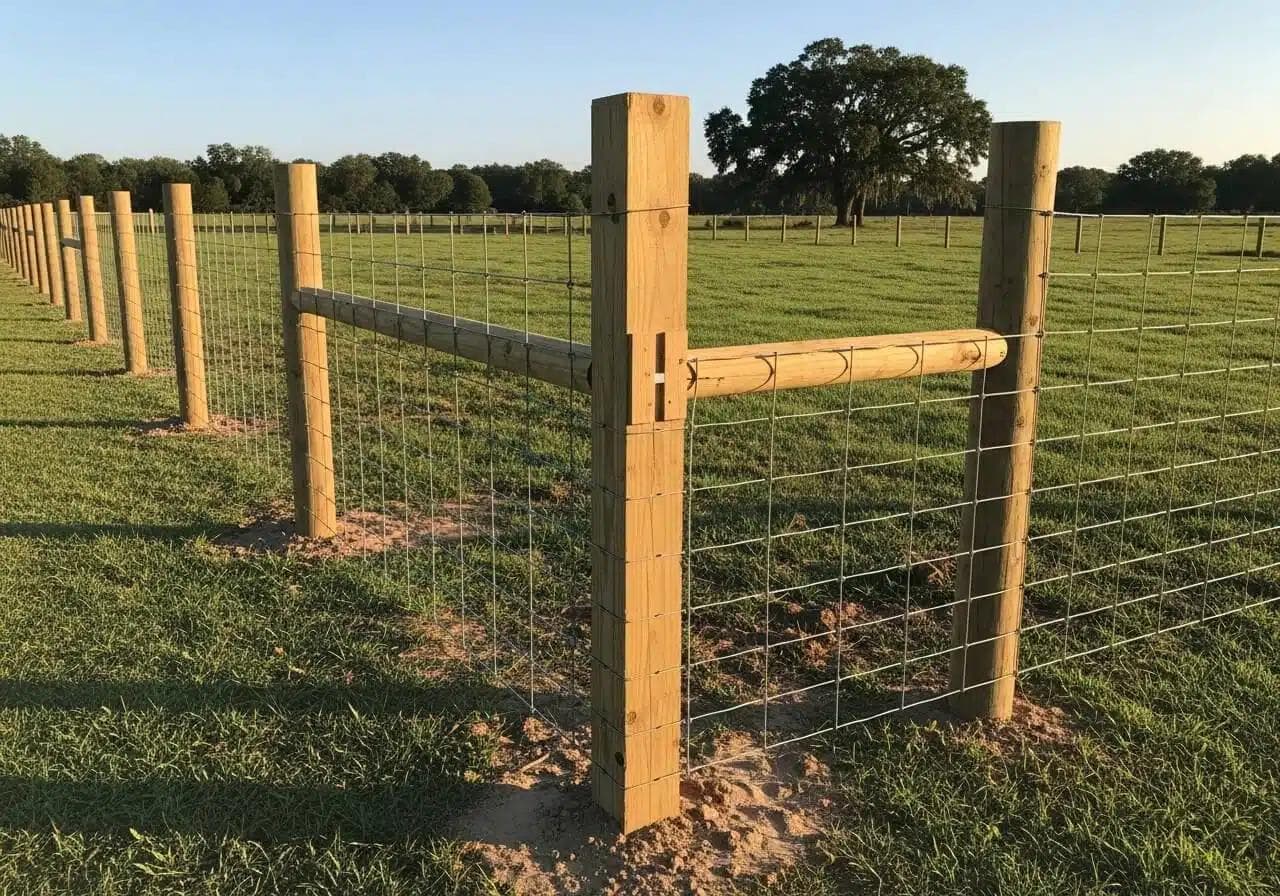
Best Practices for a Ranch-Tough Build
Need Help?
Get expert fencing advice and free quotes. Our team is ready to help with your project.
Available Mon-Fri, 8am-6pm EST
Why Professional Installation Beats DIY
Proper tension, correct post depth, and square corners are essential. A crew equipped with hydraulic drivers and spinning jennies finishes in a fraction of the time and delivers a fence that resists sagging, animal pressure, and storm damage.
Popular Hybrid Configurations
Many producers combine field fence with a top strand of barbed wire. The mesh blocks calves, while the barbed line discourages adults from leaning or rubbing on the fabric. Another proven setup is four smooth high-tensile wires, the top two electrified, offering a balance of physical and psychological deterrence.
Frequently Asked Questions About Cattle Fencing
What type lasts longest?High-tensile smooth wire outperforms other materials by maintaining tension and resisting corrosion for two decades or more.
Minimum height in Florida?State law requires three feet, but 48-52 inches improves security for larger breeds and predator deterrence.
Best all-around fence for cows and calves?Woven wire keeps calves in and reduces injury risk, making it the most versatile single solution.
How do I extend fence life in humid areas?Use Class 3 galvanized wire, treated posts, and professional installation to stop rust, rot, and premature failure.
Share this article
Related Posts
Need Help?
Get expert fencing advice and free quotes. Our team is ready to help with your project.
Available Mon-Fri, 8am-6pm EST
Related Posts
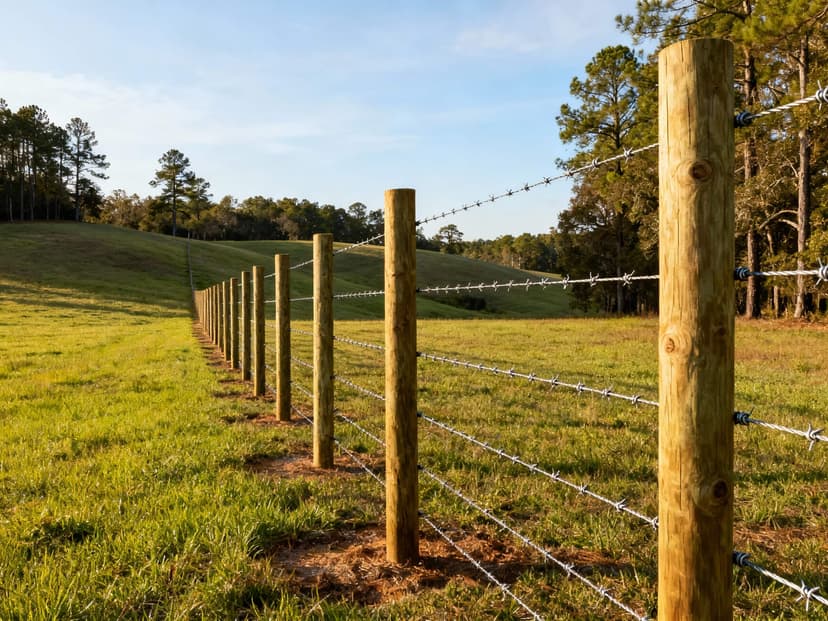
Game Fence Guide: Choosing the Best for CWD & Asset Protection
Why a High-Security Game Fence is a Critical Investment For landowners with large properties, a high-security game fence...

5 Goat Fence Ideas to Keep Your Herd Safe in the Southeast
Top Goat Fence Ideas for Southeastern Farms Your goats are clever, curious, and natural escape artists. Here in the Sout...
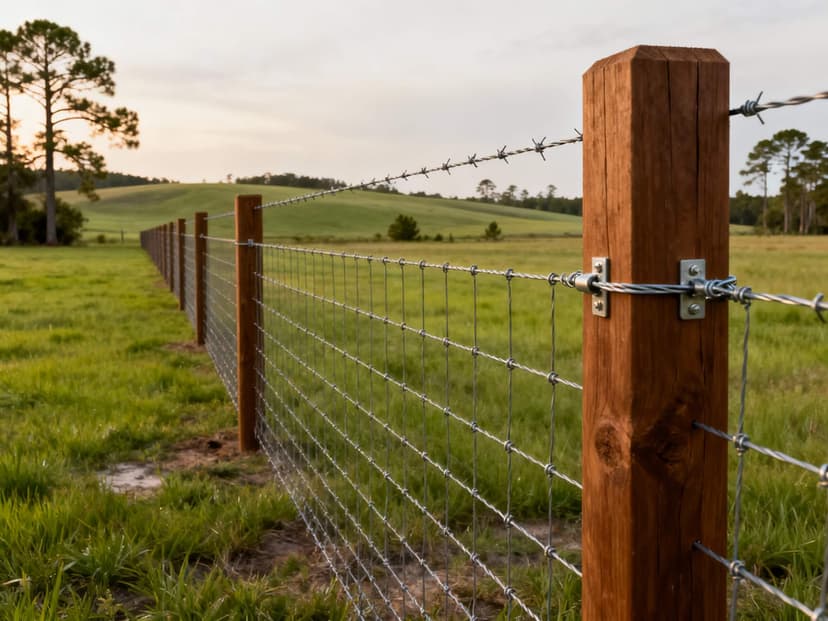
A Farmer's Guide to Stock Fence Wire in the Southeast
Why a Quality Wire Coating is Non-Negotiable in the Southeast Living and working in the Southeast means dealing with a u...
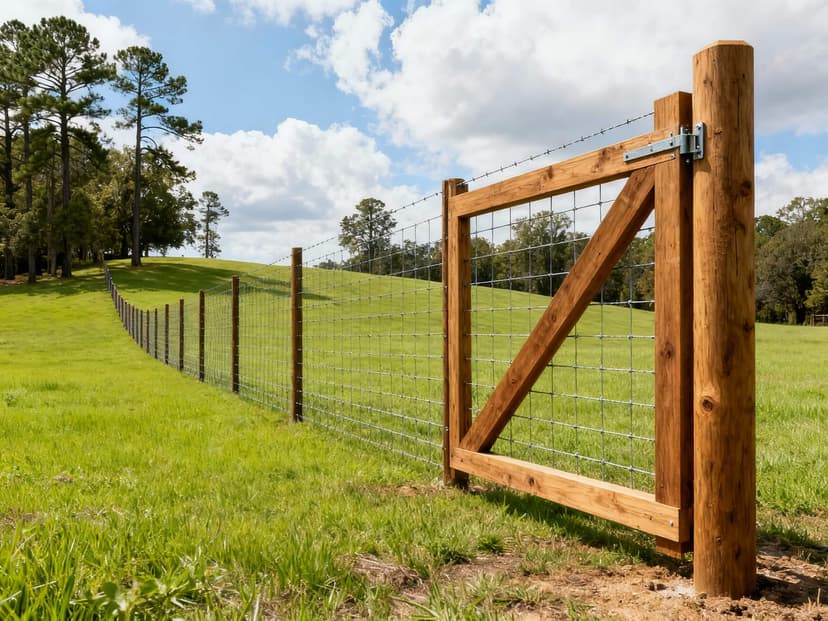
Stock Fencing Guide: Choosing the Best for Southeast Farms
A Complete Guide to Stock Fencing for a Southeastern Farm Choosing the right stock fence is one of the most critical dec...
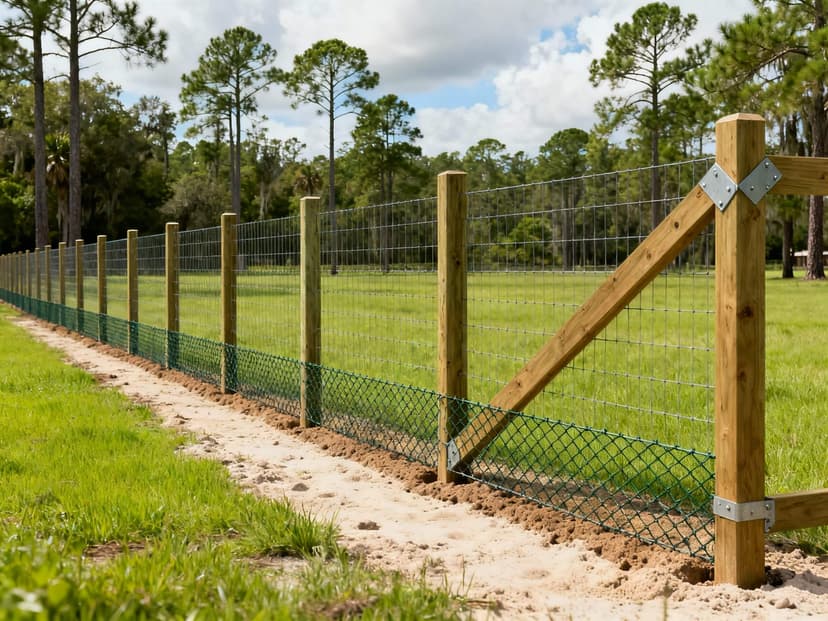
Escape Proof Goat Fencing: A Complete Guide
Why Goats Are Master Escape Artists If you've ever owned goats, you know they are clever, persistent, and surprisingly a...






